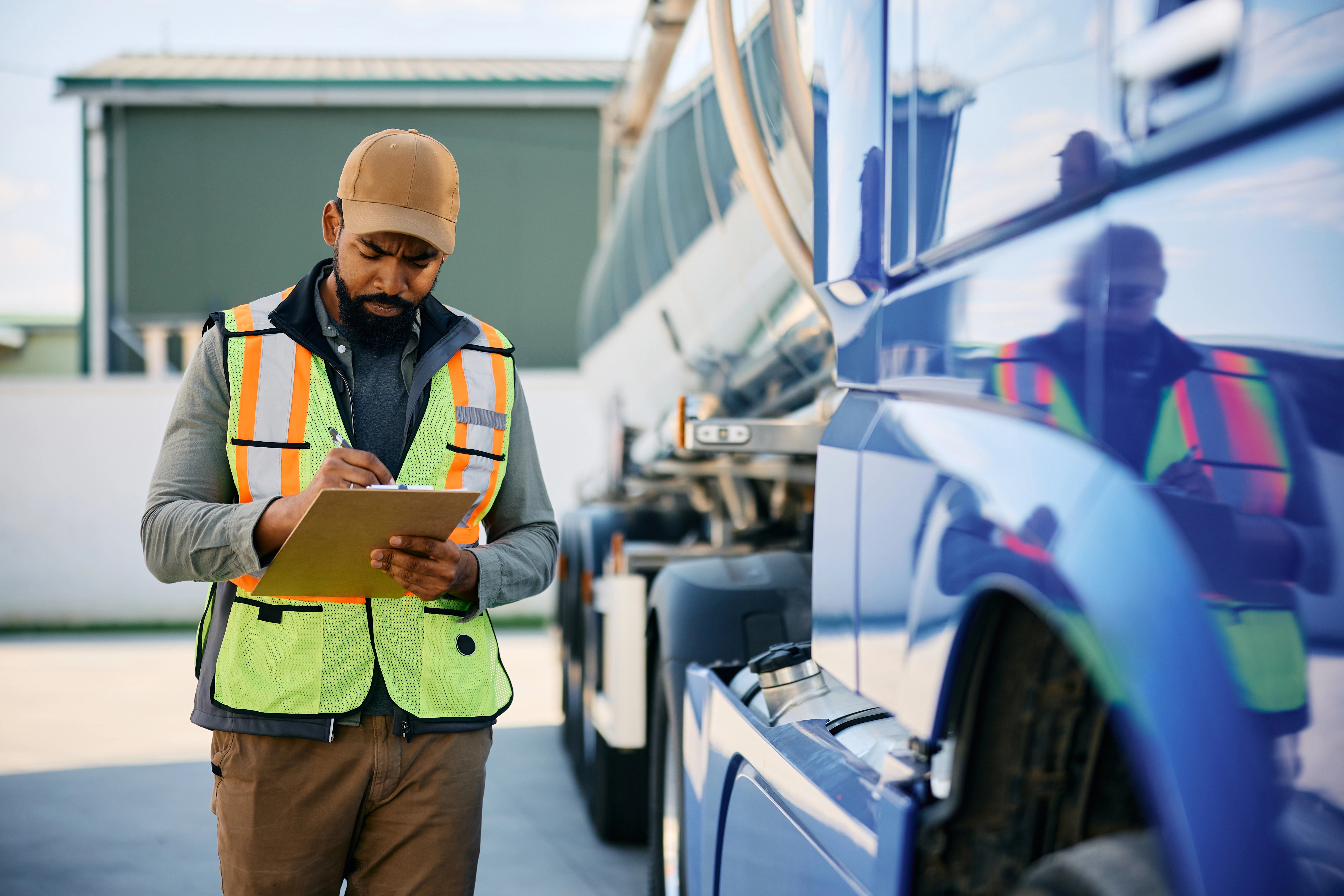Truck Driver Procedures Following an Accident
Knowing the proper steps to take after a truck accident is essential for safety, compliance, and a smooth claims process. Follow these key post-accident procedures to help protect yourself and others.
February 12, 2025
|
Trucker

Operating legally and driving safely reduces risk, but accidents can still happen. Accidents can be extremely stressful, but handling them properly helps protect everyone involved and makes the accident scene and claims process more manageable.
Here are key steps every truck driver should take following an accident:
- Stay calm. This may be the hardest step, but it is also one of the most important. Losing your cool will only make matters worse.
- Stop and assess the situation. Check if anyone in your vehicle is injured. Put on a high visibility vest and make sure it is safe to exit your vehicle. Turn on flashers and place warning devices promptly. Then, check on the condition of the people in the other vehicles.
- Get yourself and your vehicle off the road. It’s important to get off the road and out of traffic to help prevent additional accidents from occurring. However, only move your vehicle if it is safe and legal to do so. Don’t risk further injury to yourself or others if conditions aren’t safe or a vehicle isn’t drivable.
- Call 911 law enforcement emergency services and your company’s Safety Department to report this incident immediately. Be prepared to report where the accident occurred, if anyone is hurt, and what happened. This will also ensure that the accident is legally documented and the investigation process can begin. Law enforcement may dispatch emergency services, such as an ambulance, fire truck, or tow truck. Properly describing the scene will help make sure appropriate services are rendered.
- Do not admit fault! If you aren’t at fault but say so at the scene of the accident, that may be used against you later. Even if you believe you are at fault, it is better to leave the fault-finding process in the hands of the authorities and insurers. Do not make any statements other than answering questions asked by the investigating law enforcement personnel only.
- Stay polite and courteous at all times, letting people do their jobs.
- Never attempt to settle any accident by yourself. All accidents, no matter how minor they may seem to you, should be handled by authorities and your insurance carrier.
- If you have contact with an unattended vehicle, stop and attempt to locate the driver or owner. Provide motor carrier’s name and phone number on the vehicle.
- Exchange information with the other drivers. This is an essential step in the process. Collecting the right information upfront can help the claim process with your insurance company go smoothly. The following information should be obtained:
- Names and addresses of all drivers and passengers
- Makes and models of the cars involved
- Auto insurance information of the drivers
- Responding police officer's name and badge number
- Document the accident. Photos and videos can help your insurance company assess the damage and work faster for you. If the scene is safe, use your phone to take photos and video of the area, including vehicles, debris, and skid marks. Photo’s should include full shots of all 4 sides of vehicles involved including license plates, intersections of area, any skid marks that may be present.
- Store dash cam video footage securely (if available).
- Call your insurance company. Get in touch with your insurance company as soon as possible after the accident. They can start working for you immediately and help you get your life moving forward. They may send a damage appraiser to check out your vehicle, direct you to a repair shop, or ask you to get an estimate for repairing damages to your vehicle. Making this call as soon as possible can help get your vehicle taken care of and your business running again.
- Always follow FMCSA regulations on post-accident drug and alcohol testing.
An insurance company that cares about you and insuring the things you wish to be insured.
Get a Quote> Find an Agent>

